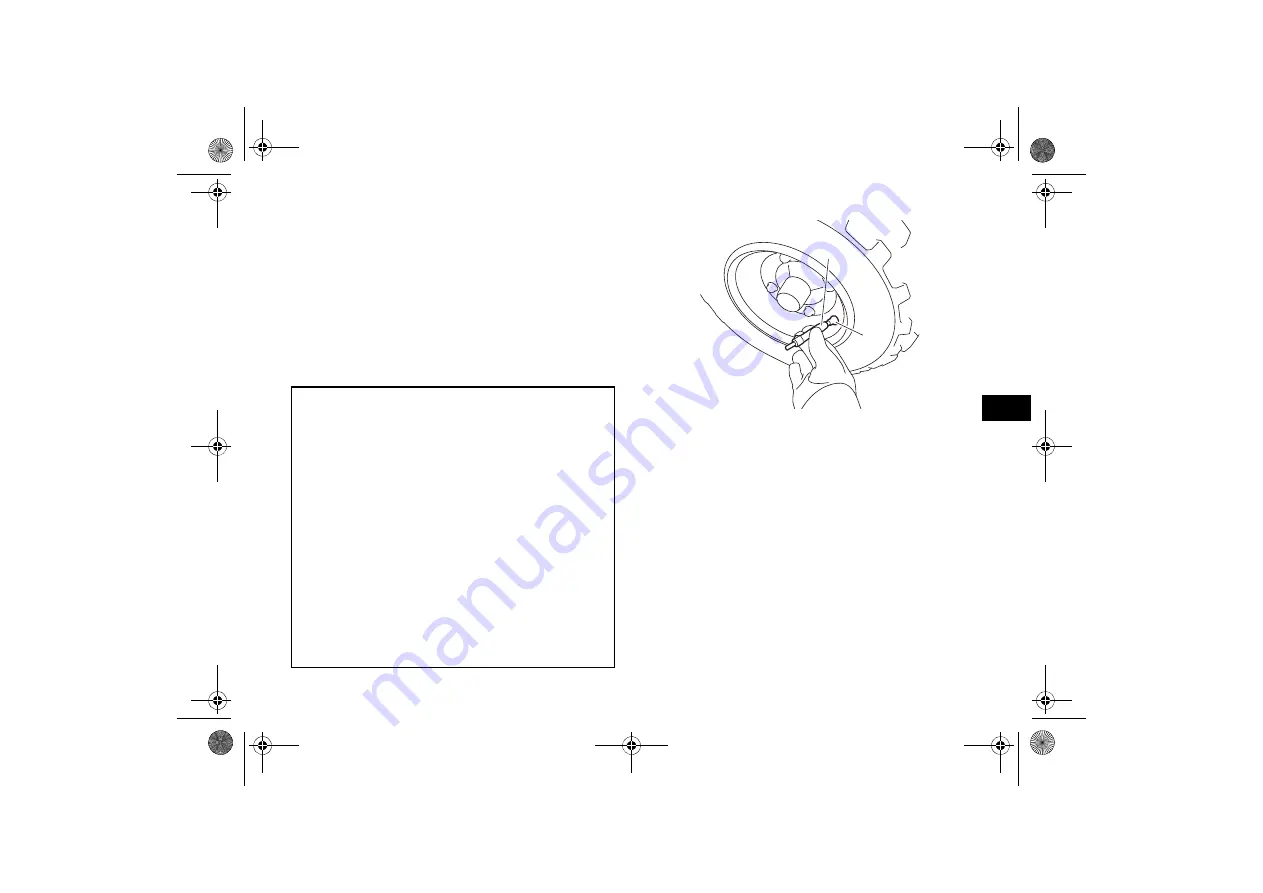
6-4
6
Tire pressure
Use a tire pressure gauge to check and adjust tire
air pressure when the tires are cold. The tire air
pressure must be equal on both sides.
WARNING! Operation of this vehicle with im-
proper tire pressure may cause severe injury or
death from loss of control or rollover. Tire
pressure below the minimum specified could
also cause the tire to dislodge from the rim un-
der severe riding conditions.
[EWB02542]
Tire pressure gauge
A low-pressure tire gauge is included as standard
equipment with your vehicle. (See page 9-2.)
When using the tire pressure gauge, make two
measurements and use the second reading as grit
in the gauge or tire valve could have caused the
first reading to be incorrect.
Tire wear
If the tire is damaged or the tire tread depth de-
creases to 3 mm (0.12 in) or less, replace the tire.
Recommended tire pressure:
Front
25.0 kPa (0.250 kgf/cm², 3.6 psi)
Rear
25.0 kPa (0.250 kgf/cm², 3.6 psi)
Minimum tire pressure:
Front
22.0 kPa (0.220 kgf/cm², 3.2 psi)
Rear
22.0 kPa (0.220 kgf/cm², 3.2 psi)
Maximum tire seating pressure:
Front
250 kPa (2.5 kgf/cm², 36 psi)
Rear
250 kPa (2.5 kgf/cm², 36 psi)
1. Low-pressure tire gauge
2. Tire air valve
1
2
UBD321E0.book Page 4 Wednesday, June 2, 2021 9:53 AM
















































